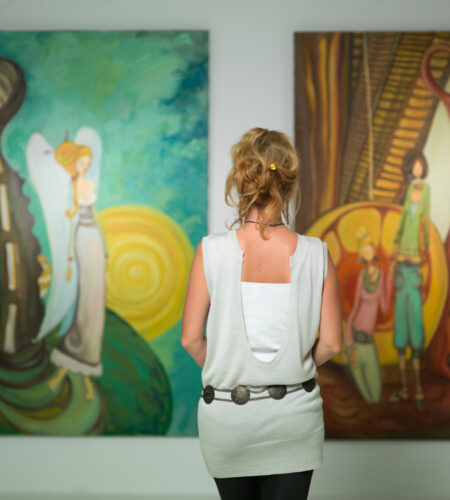Art, in its myriad forms, is a reflection of the human spirit and its cultural journey. Cultural art exhibits and galleries offer a unique window into this world, showcasing the creativity, history, and identity of different communities and civilizations. For art enthusiasts, historians, and culturally curious individuals, participating in these exhibits and galleries is not just an aesthetic experience; it’s an educational journey and a deep dive into the diverse expressions of human culture.

The essence of cultural art exhibits lies in their ability to transcend geographical and temporal boundaries. Through paintings, sculptures, photographs, and various other mediums, these exhibits tell stories from different eras and regions. They bring to life the traditions, beliefs, and everyday experiences of people from all corners of the globe. By participating in these exhibitions, visitors are offered an opportunity to engage with art that might be vastly different from their own cultural background, broadening their perspectives and understanding.
One of the most compelling aspects of cultural art exhibits is their role in preserving and showcasing heritage. Many exhibits focus on traditional art forms that are integral to a community’s cultural identity. These can range from indigenous art showcasing ancestral techniques to contemporary pieces that interpret traditional themes in new ways. By viewing these artworks, participants gain insights into the historical and cultural contexts that shaped them.
Furthermore, cultural art exhibits often serve as platforms for dialogue and education. They can challenge perceptions, raise social questions, and inspire discussions about heritage, identity, and the role of art in society. Many galleries also offer guided tours, lectures, and workshops, making the experience more interactive and informative. These learning opportunities enable visitors to not just view art, but to understand and appreciate the nuances and stories behind it.


Participating in cultural art exhibits and galleries can also be a deeply personal experience. Art has the power to evoke emotions, trigger memories, and inspire thoughts. For many, these experiences can lead to a greater appreciation of their own cultural heritage or foster a newfound interest in other cultures. It’s an exploration that can lead to self-reflection and personal growth.
Moreover, for artists and creators, these exhibits offer a wealth of inspiration. They provide a glimpse into the diverse artistic techniques, themes, and materials used in different cultures, sparking new ideas and artistic experiments. For students and emerging artists, this exposure is invaluable in developing their style and understanding the global art landscape.
Conclusion
In conclusion, participating in cultural art exhibits and galleries is a journey through the vast and varied landscape of human creativity. It offers a chance to immerse oneself in the richness of different cultures, learn about historical and contemporary artistic expressions, and engage with the global community through the universal language of art. These experiences not only enrich one’s understanding of the world but also underscore the unifying power of art in celebrating the diversity and commonalities of the human experience.



Comments